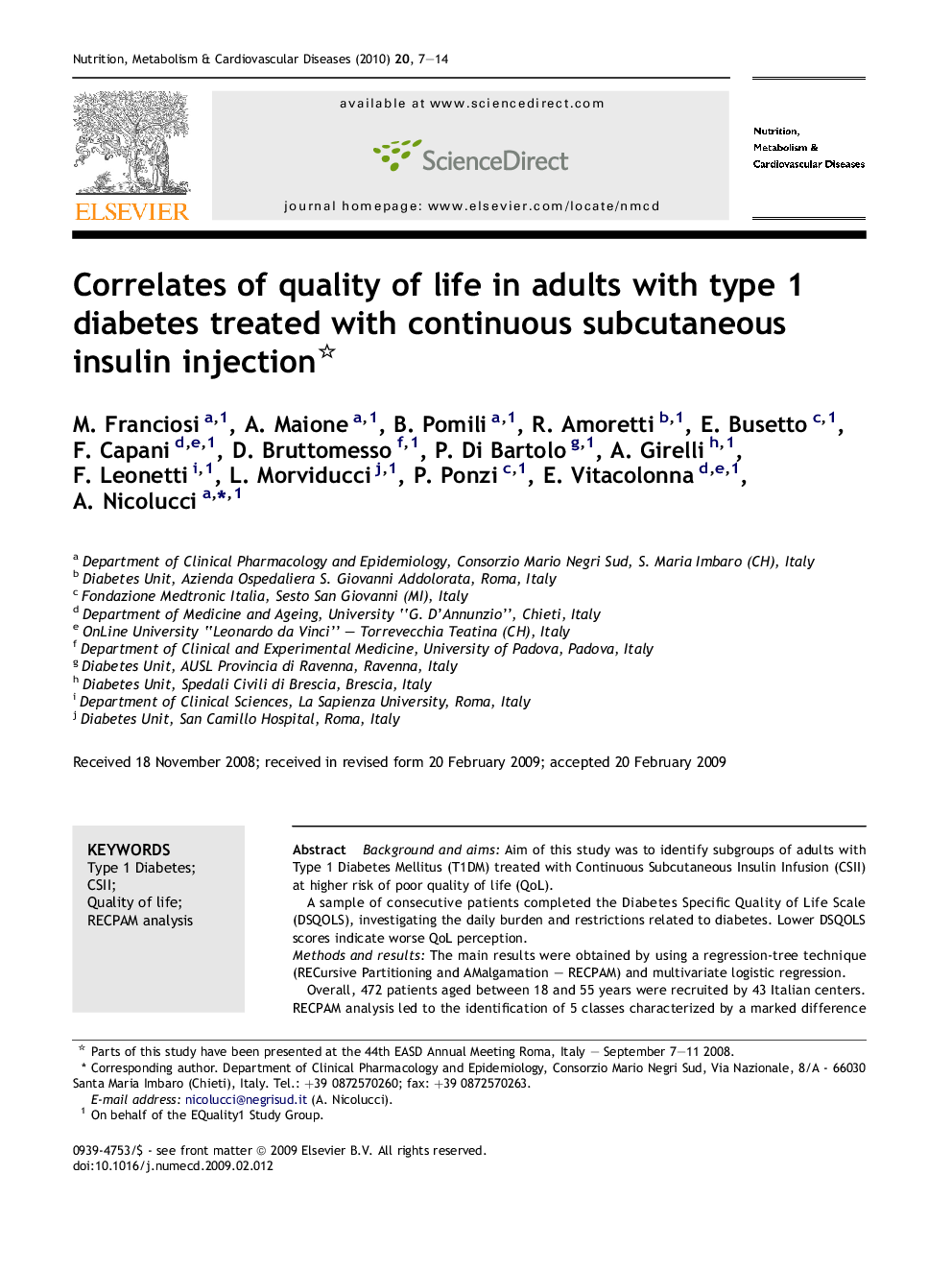| Article ID | Journal | Published Year | Pages | File Type |
|---|---|---|---|---|
| 5996819 | Nutrition, Metabolism and Cardiovascular Diseases | 2010 | 8 Pages |
Background and aimsAim of this study was to identify subgroups of adults with Type 1 Diabetes Mellitus (T1DM) treated with Continuous Subcutaneous Insulin Infusion (CSII) at higher risk of poor quality of life (QoL).A sample of consecutive patients completed the Diabetes Specific Quality of Life Scale (DSQOLS), investigating the daily burden and restrictions related to diabetes. Lower DSQOLS scores indicate worse QoL perception.Methods and resultsThe main results were obtained by using a regression-tree technique (RECursive Partitioning and AMalgamation - RECPAM) and multivariate logistic regression.Overall, 472 patients aged between 18 and 55 years were recruited by 43 Italian centers. RECPAM analysis led to the identification of 5 classes characterized by a marked difference in QoL. Male patients not reporting episodes of ketoacidosis and using CSII for >2 years had the lowest likelihood of scoring in the lower tertile of the DSQOLS summary score, and thus represented the reference category.Patients who reported â¥1 ketoacidosis episodes (OR = 5.4; 95% CI 2.4-12.1) and female patients with a duration of diabetes of <10 years (OR = 5.9; 95% CI 2.6-13.5) had the highest likelihood of reporting poor QoL, while females with longer diabetes duration (OR = 2.4; 95% CI 1.3-4.7) and males treated with CSII for â¤2 years (OR = 2.2; 95% CI 1.1-4.6) showed a two-fold risk of poor QoL. Patient age, diabetic complications and civil status were globally predictive variables associated with poor QoL.ConclusionWe identified subgroups of T1DM individuals treated with CSII showing a major impairment in QoL. Specific strategies are needed to help the patient cope with this therapeutic modality, especially during the initial phase of treatment.
